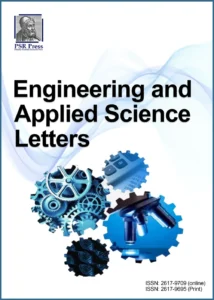The Engineering and Applied Science Letters (EASL) (2617-9709 Online, 2617-9695 Print) is an international peer-reviewed journal dedicated to publishing scientifically valid primary research across all areas of engineering and applied sciences. It provides a platform for both theoretical and applied contributions, supporting the advancement of interdisciplinary knowledge.
- Open Access: EASL follows the Diamond Open Access model—completely free for both authors and readers, with no APCs. Articles are freely accessible online without financial, legal, or technical barriers.
- Visibility: Specific details on visibility are not provided, but articles are published online immediately upon acceptance.
- Rapid Publication: Accepted papers are published online immediately in the currently running issue, ensuring timely dissemination.
- Scope: Publishes scientifically valid primary research from all areas of engineering and applied sciences.
- Publication Frequency: One volume with four issues per year (March, June, September, December).
- Indexing: Indexed in WorldCat, Scilit, Dimensions, ROAD, Publons, Crossref, ZDB, Wikidata, SUDOC, OpenAlex, EZB, and FATCAT, ensuring wide accessibility and scholarly recognition.
- Publisher: Ptolemy Scientific Research Press (PSR Press), part of the Ptolemy Institute of Scientific Research and Technology.

